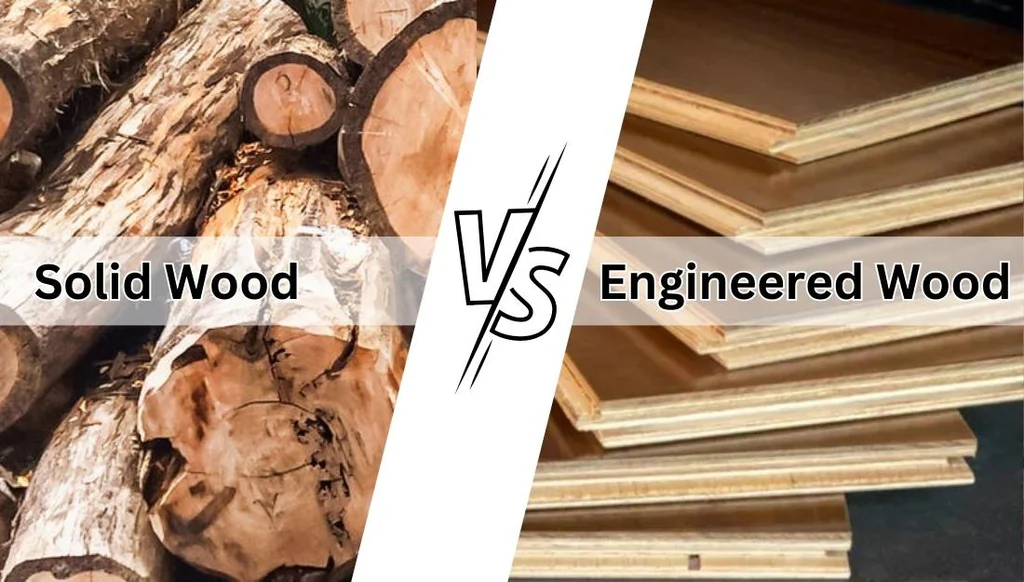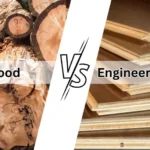There’s something special about walking into a room with real wood floors. The warmth, the texture, that satisfying sound under your feet; it just feels right. But when it comes time to choose new flooring, the question hits fast: should you go for solid hardwood or engineered wood? Both look beautiful, but they behave very differently once installed. To help you make the smartest choice for your space, here’s a homeowner-friendly breakdown of how each type performs, lasts, and fits into your budget.
Understanding the Basics
Solid wood is exactly what it sounds like; one solid piece of timber, typically three-quarters of an inch thick. Engineered wood, on the other hand, is layered. The top layer is real hardwood, while the layers beneath are made of plywood or high-density fiberboard. That layered design changes everything about how it handles moisture, temperature, and installation.
Think of solid wood as the classic; it’s strong, beautiful, and lasts for generations. Engineered wood is the modern cousin who’s learned a few tricks. It offers flexibility, easier installation, and less stress over climate changes, especially in California’s mixed humidity zones.
Durability: Which One Stands the Test of Time?
Solid hardwood has a well-earned reputation for lasting decades. In fact, many 100-year-old homes still have their original wood floors shining after a few refinishes. Because it’s solid all the way through, you can sand and refinish it multiple times over its lifetime. That makes it a top pick for homeowners who want something truly long-lasting.
Engineered wood, while not quite as immortal, still puts up a strong fight. Its layered construction gives it more stability, meaning it’s less likely to expand, contract, or warp when the weather changes. That makes it ideal for basements, kitchens, and even areas near the coast where humidity fluctuates. Most engineered floors can be refinished once or twice, depending on the thickness of the top layer.
If you’re the type who likes to refresh your floors every few decades, solid wood wins the longevity game. But if you’d rather avoid warping and maintenance headaches, engineered wood quietly takes the trophy for practicality.
Looks That Impress
Here’s the thing: at first glance, most people can’t tell the difference. Both options use real hardwood surfaces, so your eyes (and guests) see genuine wood grain, not a printed pattern. The big difference lies in the customization.
Solid hardwood can be sanded, stained, and restained in almost any color. If trends change or you just want a new vibe, you can give your floors a makeover without replacing them. You can choose from oak, maple, walnut, cherry, hickory; the list goes on, and every piece is unique.
Engineered wood offers the same species and finishes but with a catch: what you buy is what you keep. Once installed, you can’t dramatically change the color later without risking the thin top layer. Still, manufacturers have stepped up their game. You can now find prefinished engineered boards with ultra-matte or wire-brushed textures that look custom-made.
If your heart’s set on flexibility and future color changes, solid hardwood will make you happiest. But if you want the look of luxury without the wait or mess of on-site finishing, engineered wood makes life easier.
Installation and Maintenance
This is where engineered wood really earns its reputation as the homeowner’s best friend. It can be installed in several ways: nailed down, glued, or even floated over existing floors. That last option makes it especially useful for remodels where tearing up the subfloor isn’t ideal.
Solid hardwood, by contrast, always requires nailing or stapling to a wooden subfloor. That limits where you can put it. It’s not suitable for concrete slabs or below-grade spaces, and it requires professional installation.
When it comes to upkeep, both types need regular sweeping and gentle cleaning with a wood-safe solution. The difference shows up with moisture. Engineered wood tolerates humidity better, making it safer for kitchens or first floors. Solid wood needs more care and climate control to avoid gaps or buckling.
So, if you’re remodeling a home in a place like San Jose or Los Gatos where weather shifts between cool winters and warm summers, engineered wood offers peace of mind without sacrificing beauty.
Costs: The Deciding Factor for Many
Here’s where things get interesting. Solid hardwood generally costs more upfront; usually between $8 to $15 per square foot, depending on the species and finish. Installation adds another $4 to $8 per square foot, and that doesn’t include potential subfloor prep.
Engineered wood, meanwhile, ranges from $5 to $12 per square foot, with installation often a bit cheaper because it’s quicker and easier. But the trade-off comes later. Since you can refinish solid hardwood multiple times, it may outlast engineered flooring, giving you better long-term value.
If you plan to stay in your home for decades and want an investment that ages gracefully, solid wood might justify the extra cost. But if you’re remodeling with a mid-range budget or plan to sell in a few years, engineered wood delivers excellent quality for the price.
Environmental Impact and Sustainability
Both solid and engineered wood can be eco-friendly when sourced responsibly. Solid wood typically uses more raw material, but it lasts longer and can be refinished rather than replaced. Engineered wood uses less hardwood overall and often incorporates recycled wood fibers in its base layers.
Modern finishes are now more sustainable, too. Water-based sealants and low-VOC finishes reduce indoor emissions and keep your home’s air healthier. If sustainability matters to you (and it should), make sure your flooring is FSC-certified, which guarantees responsible forest management.
Final Touches and Smart Choices
Choosing between engineered and solid hardwood isn’t just a style decision; it’s a lifestyle one. If you love the tradition, depth, and longevity of true wood planks and don’t mind the higher cost or maintenance, solid hardwood is a timeless investment. But if you prefer something easier to install, less prone to warping, and just as beautiful, engineered wood might be your perfect match.
Both will elevate your space, increase your home’s value, and make your interiors feel polished and inviting. The key is to weigh what matters most: durability, flexibility, or budget, and match that to your daily life.
Ready to plan your flooring upgrade with a trusted local team? Learn more and get expert help fromroy’s builders to bring your renovation vision to life. Beautiful, lasting floors start with the right foundation and the right people to install them.






